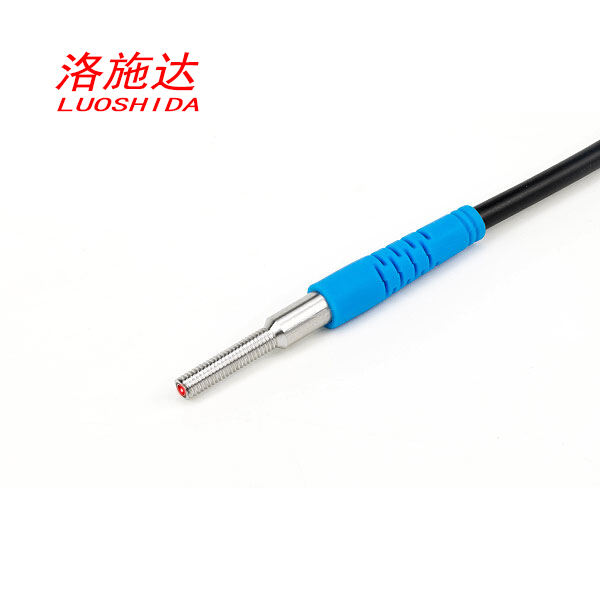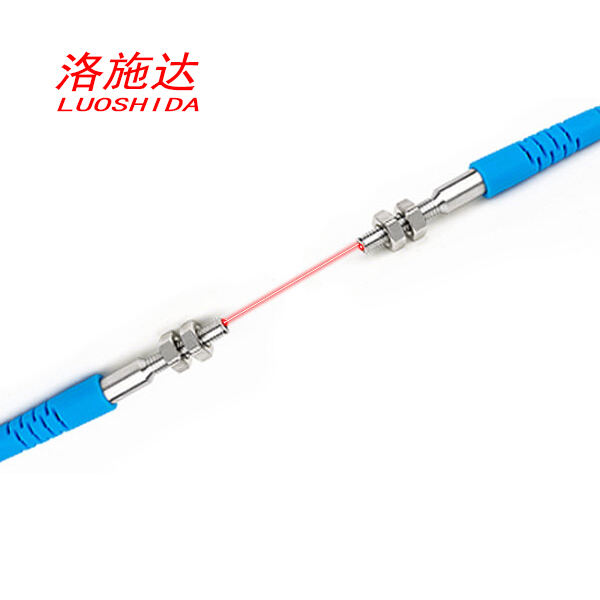Mini Laser Sensors: Space-Constrained Positioning Perfected
Key Features and Specifications of Mini Laser Sensors
Ultra-Compact Design for Precision Positioning
Mini laser sensors have become really popular because of how tiny they are, usually no bigger than a couple of centimeters across. Their small size makes them easy to fit into cramped spots where bigger equipment wouldn't work, something that matters a lot in factories and production lines. When space is limited, these little sensors still manage to deliver accurate readings despite their miniature form factor. Plus, since they weigh so little, they don't put much strain on robotic arms or automated systems. This matters quite a bit in manufacturing settings where every gram counts toward maintaining smooth operations under tough conditions.
High-Performance Sensing Distance & Repeat Accuracy
What sets these miniature laser sensors apart is their amazing ability to detect objects at incredible ranges. Some models can pick up signals just a few centimeters away while others work reliably beyond 20 meters. Because they cover such a wide range, manufacturers find them useful in all sorts of factory applications from assembly lines to quality control stations. Another big plus? Their repeat accuracy stays rock solid at around +/- 0.1 mm. That kind of precision beats out standard inductive sensors by quite a margin. Lab testing consistently shows these sensors deliver reliable results even when conditions change rapidly on production floors. For engineers looking for dependable measurement solutions, this combination of range, accuracy, and robustness makes them worth considering for many industrial challenges.
IP65 Protection and Stainless Steel Housing
Protection from environmental hazards matters a lot in industrial environments, and mini laser sensors stand out because they have an IP65 rating. With this rating, the sensors can handle dust getting inside and resist water jets too, which makes them good choices for tough spots around factories and plants. The housing on these sensors is made of stainless steel, so they last longer without rusting or breaking down when exposed to harsh conditions. Most manufacturers design these sensors according to recognized industry standards like IEC 60529, meaning they actually work where needed instead of just looking the part. Workers on factory floors appreciate knowing their equipment won't fail unexpectedly due to poor protection against dirt and moisture.
Product Showcase: DC M3 Ultra-Mini Laser Sensor Series
DC M3 Diffuse Mode Sensor: Adjustable 30-40mm Range
The DC M3 diffuse mode sensor works best when we need really accurate readings from objects that are right next to it. Its range can be adjusted between 30 and 40 millimeters, so it fits perfectly in situations where getting exact measurements fast matters most. What sets this sensor apart is how easy it is to tweak the detection range based on what's around it. Different materials and surfaces don't throw it off much either. Factory workers who test these sensors often notice they keep performing well even when dealing with all sorts of tricky surfaces. Because of this reliable behavior, many manufacturing plants install them in tight spots where space is limited but precision still needs to stay top notch.
DC M3 Through-Beam Mode: 20M Long-Distance Detection
The DC M3 through beam sensor works really well for detecting things from far away, covering distances all the way up to 20 meters. For big operations that need complete coverage without losing precision, this matters a lot. How it works is pretty straightforward actually the sensor needs a clear path between the light source and the detector. This setup gives excellent detection results which makes these sensors great for many different industrial settings. Real world testing shows they can boost efficiency in large spaces while still performing reliably even when there are other factors getting in the way. Factories have reported significant improvements after switching to this system because it just keeps working no matter what minor disturbances might occur around it.
Dual Operating Modes Comparison
Looking at how the DC M3 series works in both diffuse and through-beam modes shows why each has its own strengths for different situations. Diffuse mode works great for detailed work where space is tight, whereas through-beam gives much better coverage over larger areas. Going back and forth between them doesn't cause any problems, so factories can fit these sensors wherever they need them most. Most people who install these sensors run some tests first to see which mode fits their particular setup better. This kind of flexibility means the DC M3 isn't just another sensor it's become a go-to solution across many industries where conditions keep changing from day to day.
To stay competitive and productive, choosing the appropriate mode is crucial; thus, consulting industry evaluations and leveraging comparative data can significantly enhance decision-making processes, ensuring the technology aligns precisely with operational demands.
Technical Advantages in Compact Positioning
1.0mm Micro Spot Size vs Traditional Inductive Sensors
Mini laser sensors featuring a micro spot size around 1 mm deliver exceptional accuracy for spotting those really small parts, beating traditional inductive sensors hands down. Take PCB assembly for instance, where there's just no room for error and every millimeter counts. Real world testing shows what makes sense logically too: the smaller the spot size, the better the results tend to be. These little lasers become absolutely necessary equipment whenever someone needs to work on something complicated but delicate, where getting measurements right matters more than almost anything else.
NPN/PNP Switching Configurations Flexibility
The mini laser sensors offer real versatility because they work with both NPN and PNP switching setups. This means they can fit into all sorts of control systems throughout various manufacturing sectors. The fact that these sensors adapt so well makes installation much easier for technicians and helps them connect the devices to whatever electrical infrastructure already exists on site without creating unnecessary complications. Most experienced engineers will tell anyone who asks that picking the right configuration based on what the actual project needs is absolutely critical. Getting this right from the start saves time down the road and keeps everything running smoothly without unexpected hiccups later on.
EMC Compliance for Industrial Environments
Mini laser sensors meet EMC (Electromagnetic Compatibility) standards, which is really important when they need to work safely in factories full of all sorts of electronic equipment causing interference. We've actually run them through standard tests that show how well they handle electrical noise and other disturbances without problems. When these sensors pass those EMC requirements, it means there's much less chance they'll malfunction unexpectedly. That makes them reliable enough for jobs where things just can't go wrong, like in manufacturing lines or quality control systems where even small errors could lead to big issues down the line.
Industrial Applications in Space-Limited Environments
Robotic Arm Position Feedback Systems
The tiny laser sensors used in robotic arm systems give real time feedback that keeps movements and positioning spot on. These little guys fit into tight spots because they're so small, which means manufacturers can get precise results even when working with limited room to maneuver. We've seen this work wonders across different factories. For instance, automotive plants now run smoother operations thanks to these sensors improving robot arm accuracy during assembly line tasks. The tech really shines in sectors like electronics manufacturing where both physical space constraints and exact measurements matter a lot for quality control purposes.
Medical Device Assembly Line Integration
Medical device manufacturers rely heavily on mini laser sensors to get parts aligned just right during assembly work. Getting this alignment spot on matters a lot when it comes to keeping product quality consistent across batches. The accuracy these sensors bring makes meeting healthcare standards much easier, something that's absolutely necessary in clean rooms and other regulated spaces where mistakes aren't an option. Quality control teams have seen real improvements too. One factory reported cutting assembly errors by nearly half after installing these tiny but powerful sensors on their production lines. This kind of improvement doesn't just look good on paper either it translates directly into faster production cycles and fewer defective units making their way out the door.
Micro-Electronic Component Alignment
Mini laser sensors play a vital role in putting together those tiny electronic parts we see everywhere nowadays. When placing components onto circuit boards, precision matters a lot because even small misalignments can throw off the whole board. These little lasers cut down on how often machines need to be readjusted during production runs. Factory managers report real savings when they implement this technology both in terms of time spent fixing alignment issues and overall manufacturing expenses. Some recent tests at semiconductor plants showed yield improvements of around 15% after switching to laser-based positioning systems. For companies competing in today's tight electronics market, getting those extra percentage points makes all the difference between profit margins and losses.
These examples indicate the wide range of applications and benefits of mini laser sensors across various industries. Whether in robotics, healthcare, or electronics, their ability to function effectively in space-restricted environments makes them an invaluable asset.
Comparing Laser vs Inductive Proximity Sensors
Accuracy Benchmarks: Laser Displacement vs Magnetic Induction
Looking at how accurate different sensors are, laser displacement sensors really shine compared to others on the market. Take magnetic inductive sensors for instance they typically hit around plus or minus 0.5mm accuracy while laser models usually get down to about 0.1mm under similar conditions. That kind of gap makes all the difference when working on projects where exact measurements matter. Precision matters a lot across industries these days, so switching to laser tech often pays off big time operationally speaking. From factory floors to hospital equipment calibration, getting those tiny details right through better sensor tech directly affects product quality and service results in ways that nobody wants to overlook.
Environmental Tolerance in Harsh Conditions
Laser sensors handle tough environments pretty well when put to work in places with extreme heat or cold, lots of dust, or high moisture levels. Testing in different industries shows these sensors keep working even when inductive ones start to fail, so operations don't get interrupted. Because they perform consistently despite changing conditions, many companies install them outdoors and inside factories where reliable performance matters most. Construction sites, mining operations, and agricultural equipment all benefit from this durability. The fact that laser sensors stand up to harsh treatment makes them especially valuable for critical systems where downtime simply isn't an option.
Cost-Efficiency Analysis for Automation Projects
Looking at the numbers shows some pretty clear advantages for using laser sensors over time in automation work. Sure, they cost more upfront than regular inductive sensors, but think about all the money saved later on repairs and fixing errors down the line. When companies actually calculate what they're spending versus what they're getting back, the math usually favors laser tech because it runs smoother and needs fewer fixes. Most factories that switched to lasers report better bottom lines after a few years compared to places still using old school sensors. For anyone running an automated system and trying to cut costs while making things run better, adding laser sensors makes sense even if the price tag looks steep at first glance. Just remember to factor in those hidden savings when doing budget planning.

 EN
EN
 AR
AR
 FR
FR
 DE
DE
 IT
IT
 JA
JA
 KO
KO
 PT
PT
 RU
RU
 ES
ES


